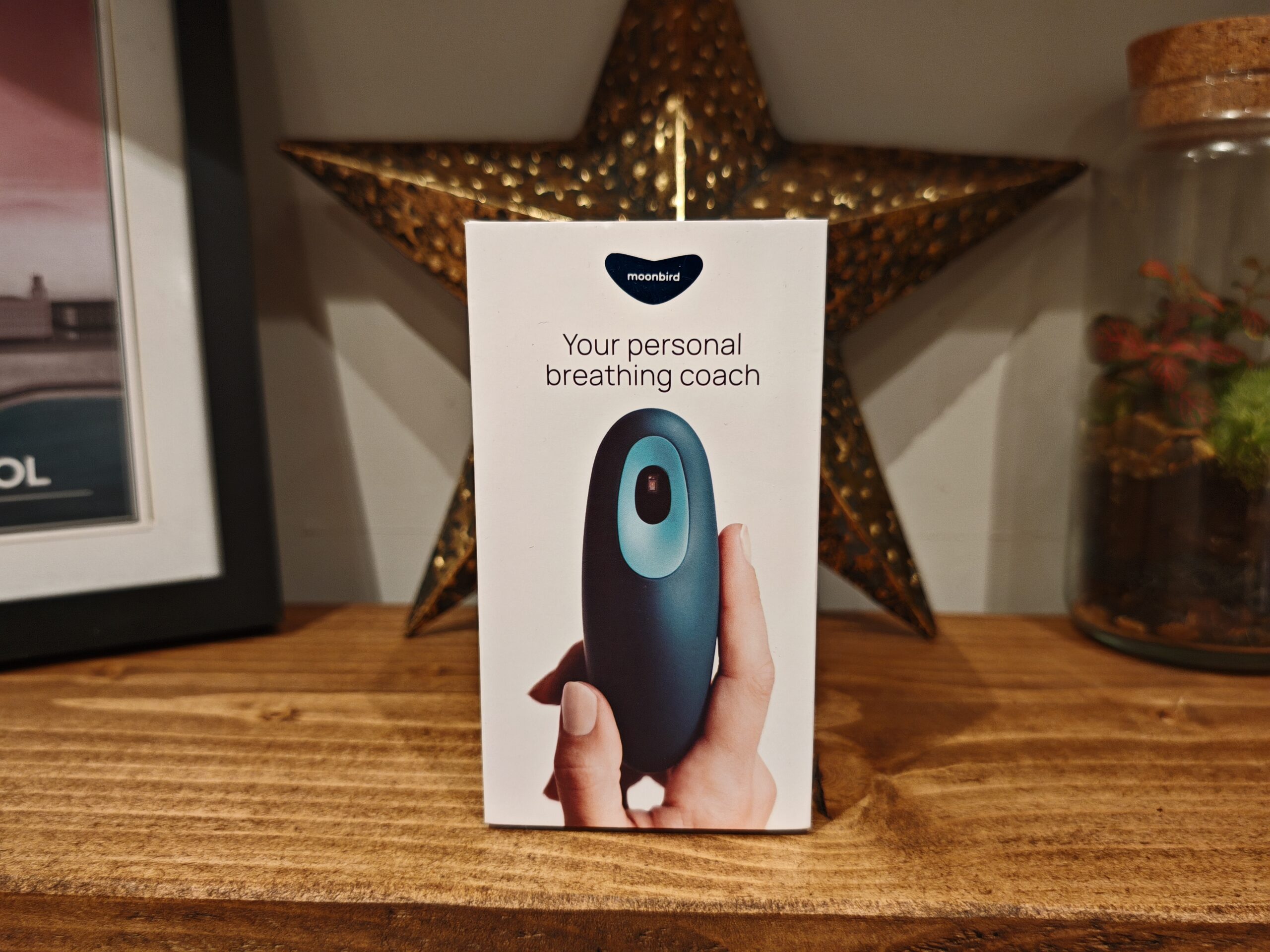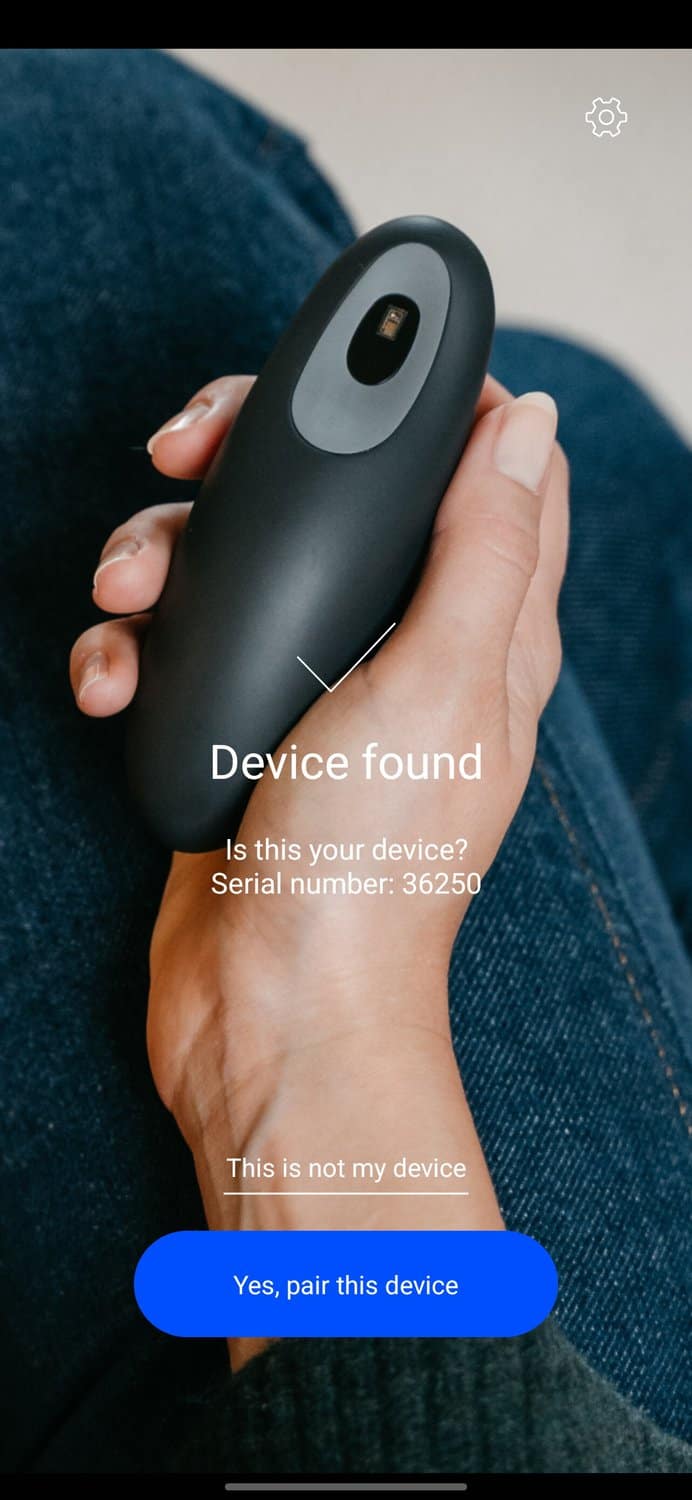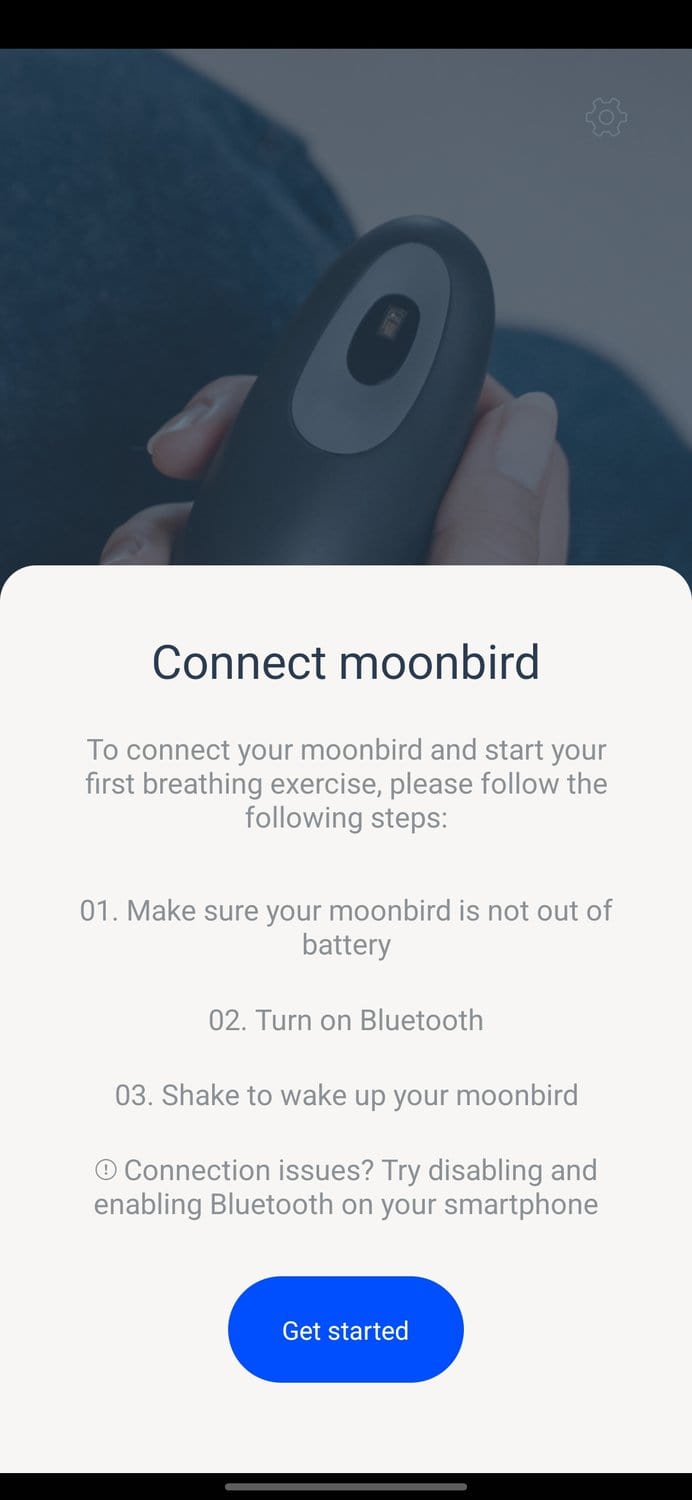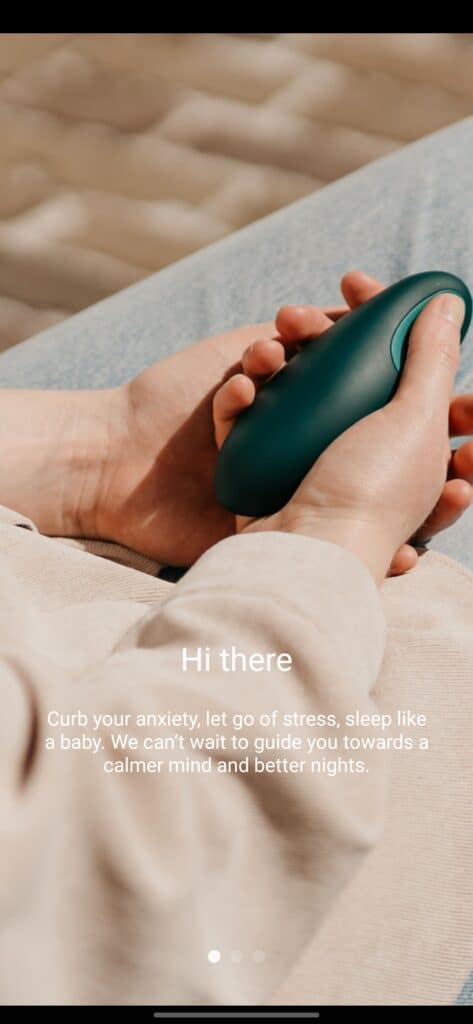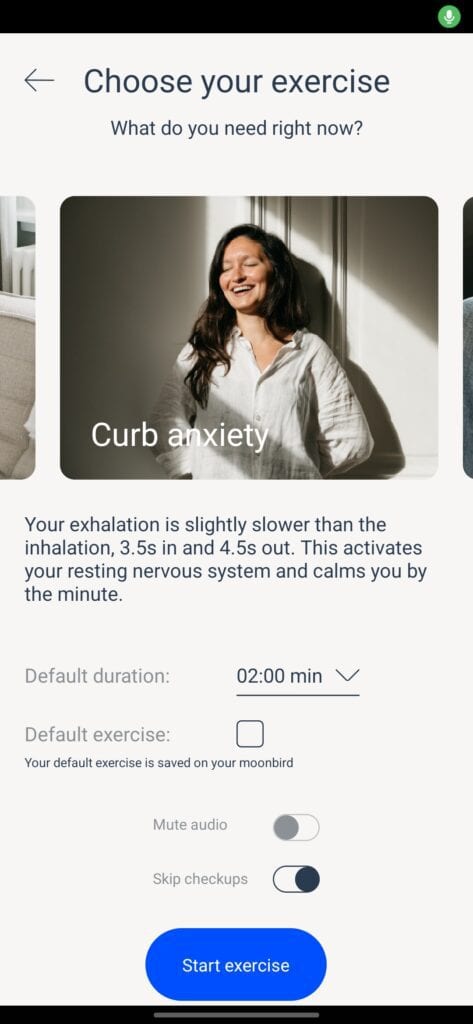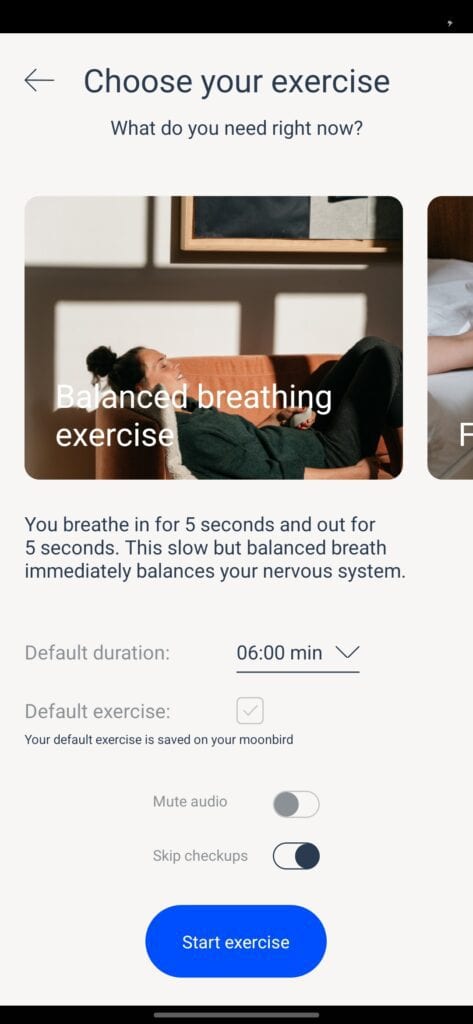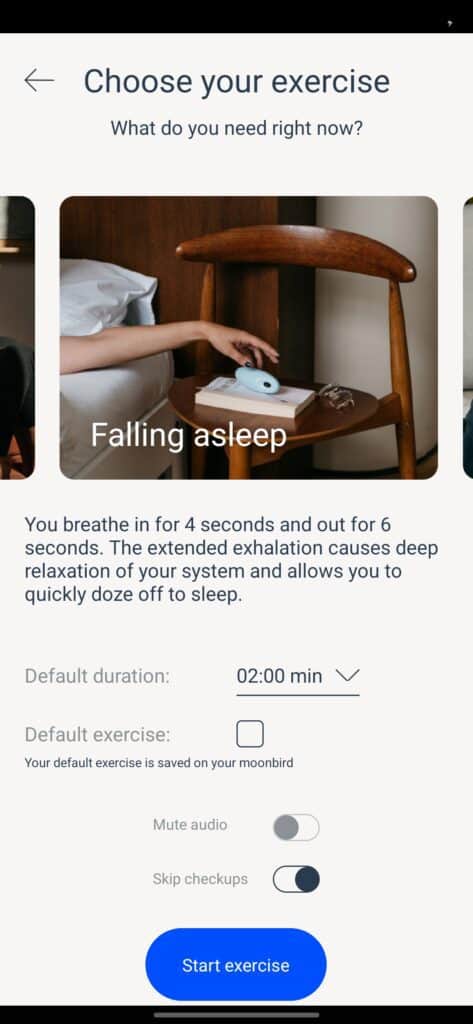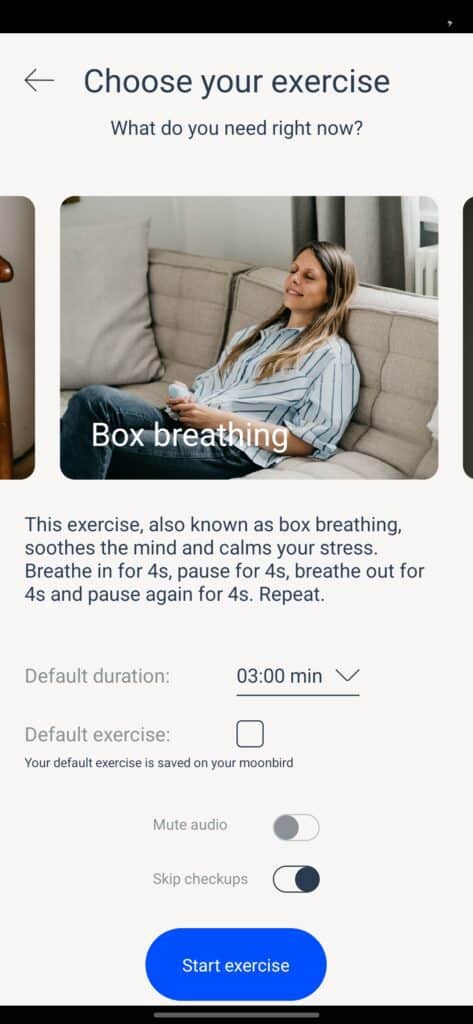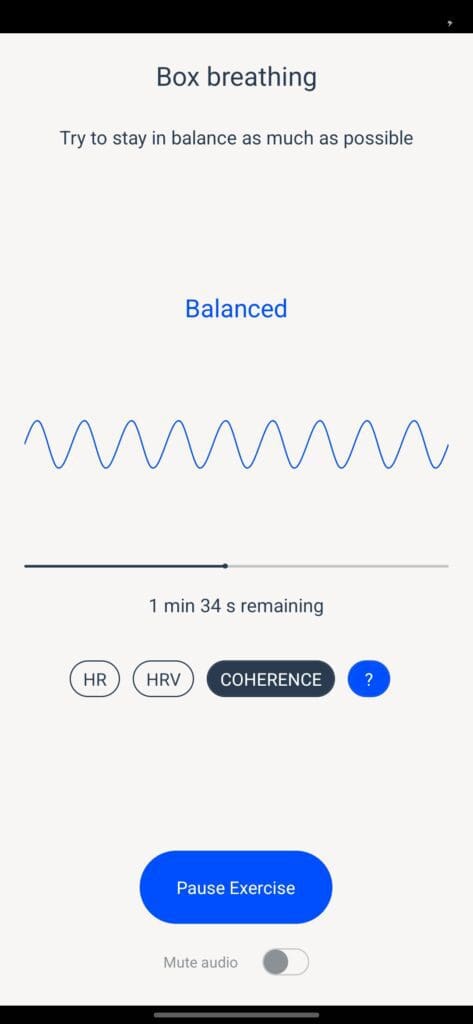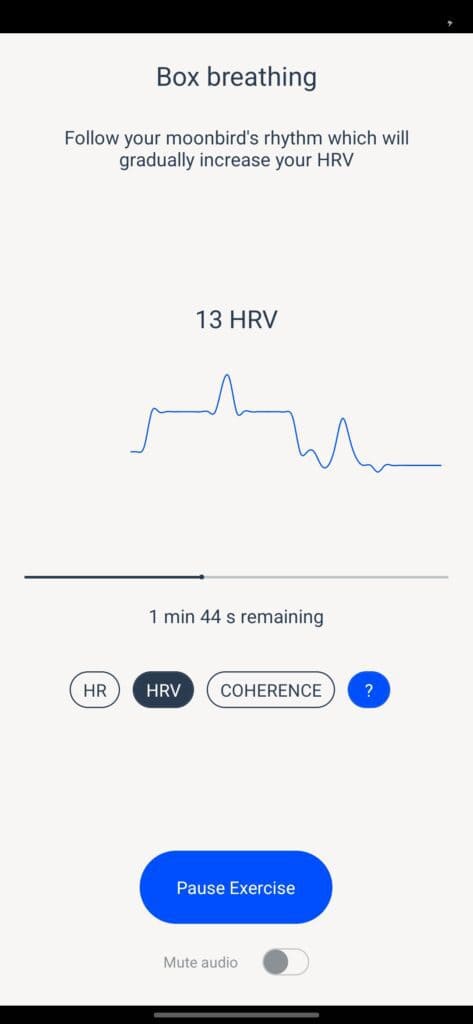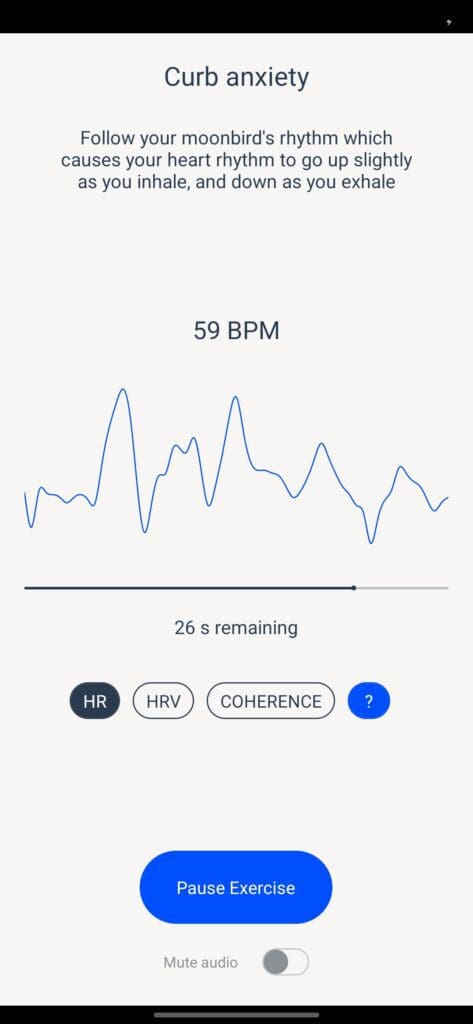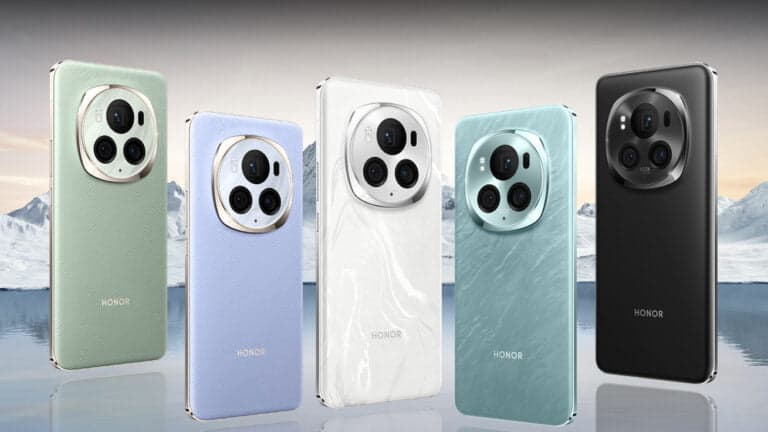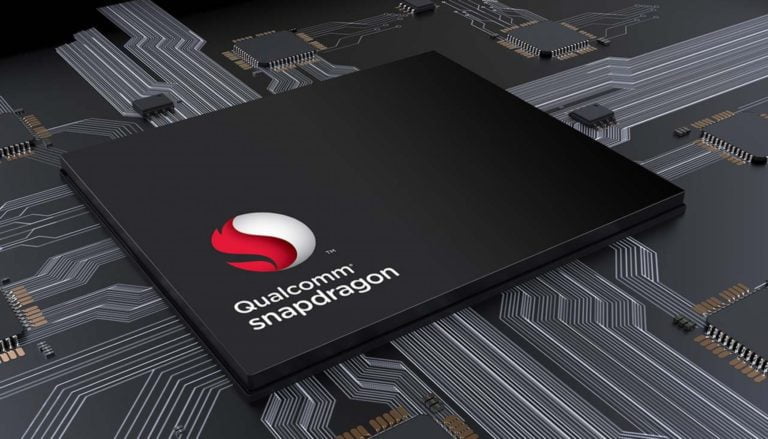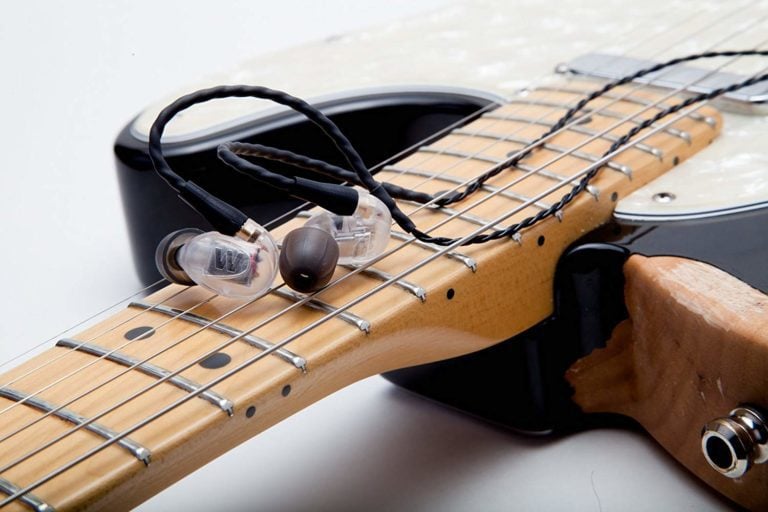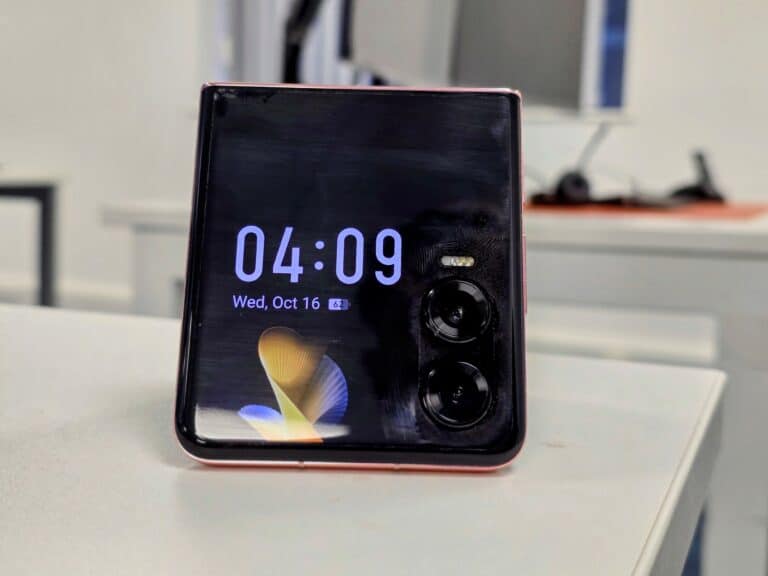Any links to online stores should be assumed to be affiliates. The company or PR agency provides all or most review samples. They have no control over my content, and I provide my honest opinion.
I have reviewed a few health tech products that aim to improve well-being, including the popular Sensate relaxation device.
While I love the idea of using devices to improve mental health, sleep or general well-being, I haven’t had much luck with the devices I have used.
In my case, I have ADHD, I am likely ASD, and I have terrible anxiety and sleep problems.
I have tried pretty much everything to help with sleep and anxiety, but I have always struggled to get into meditation/mindfulness.
Moonbird is another product that is supposed to help with breathing and meditation exercises, so I was eager to try it out. But, based on past experiences, I was somewhat sceptical of its effectiveness.
However, my experience with this product has been much more positive than other devices I have reviewed.
What is Moodbird?
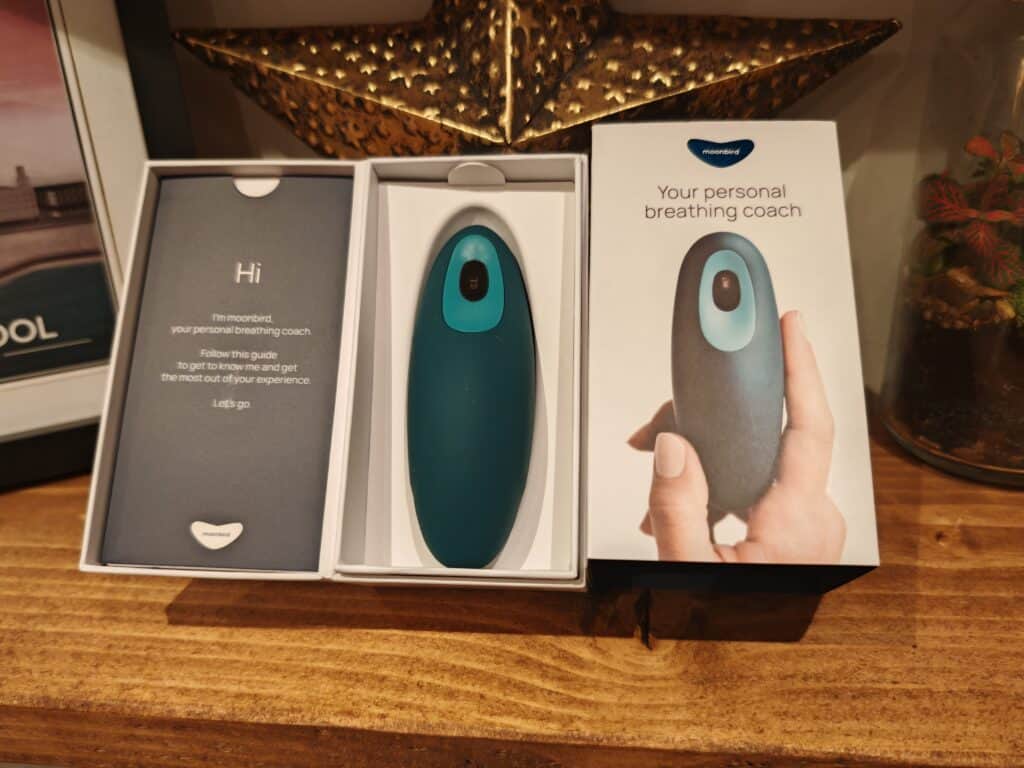
Moonbird is a handheld device that expands and contracts slowly, guiding you through breathing exercises and providing feedback using your heart rate or HRV.
By holding Moonbird in your hand, you can effortlessly sync your breathing with its gentle rhythm, embarking on calming breathing exercises. This simple yet effective ritual helps you find the precious serenity that often seems out of reach in our busy modern lives.
Therapists and respected medical professionals recommend Moonbird as a supportive treatment tool for those dealing with stress, anxiety, and sleep issues. By integrating Moonbird into your daily routine, you can create a sanctuary from the demands of the world, finding moments of respite and tranquillity.
The Moonbird package includes everything you need to begin your journey towards greater well-being: the Moonbird device, a convenient charging cable, a protective pouch, and exclusive access to the Moonbird app. The app not only allows you to connect with your Moonbird but also provides a wealth of guided breathing exercises and audio guides to support and enhance your wellness practice.
As a physical breathing guide, Moonbird expands and contracts in your hand, encouraging you to match its rhythm by inhaling as it expands and exhaling as it contracts. The app offers real-time biofeedback on heart rate, heart rate variability, and coherence while also allowing you to customise your breathing exercises and rhythm. Moonbird can be used in various situations, such as between meetings, in traffic, or before bed. You have the freedom to decide when and where to take a break and focus on your well-being. To experience the most benefits and become accustomed to breathing with Moonbird, it is recommended to start with short, 4–6-minute exercises, 2-3 times a day.
Design
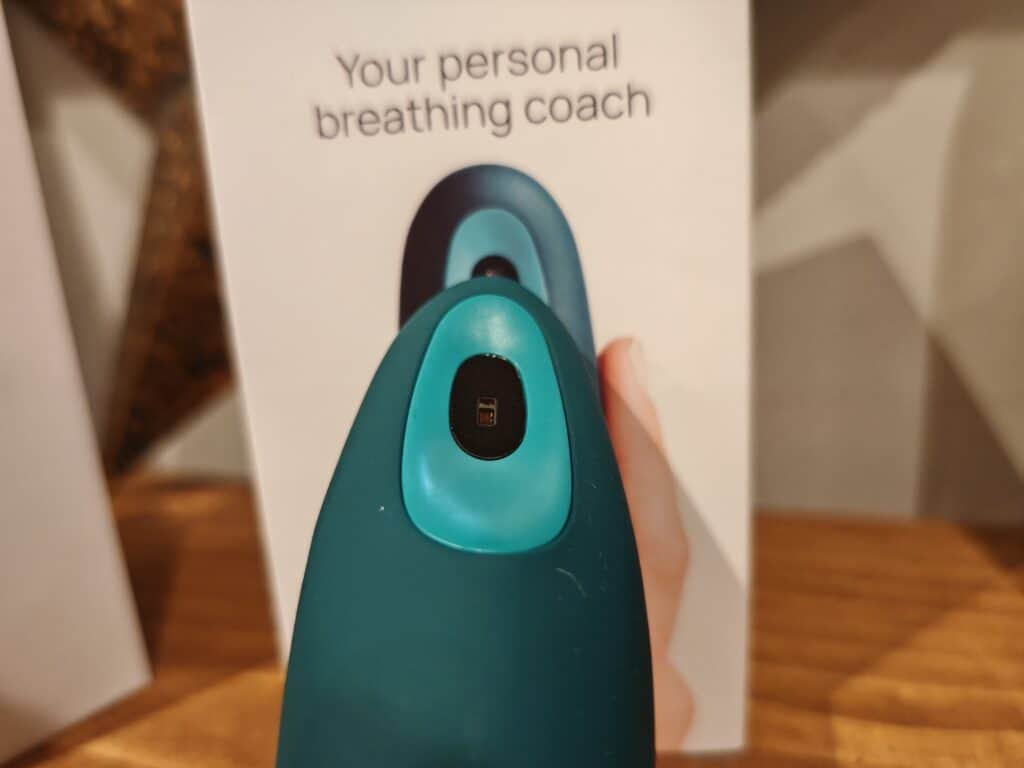
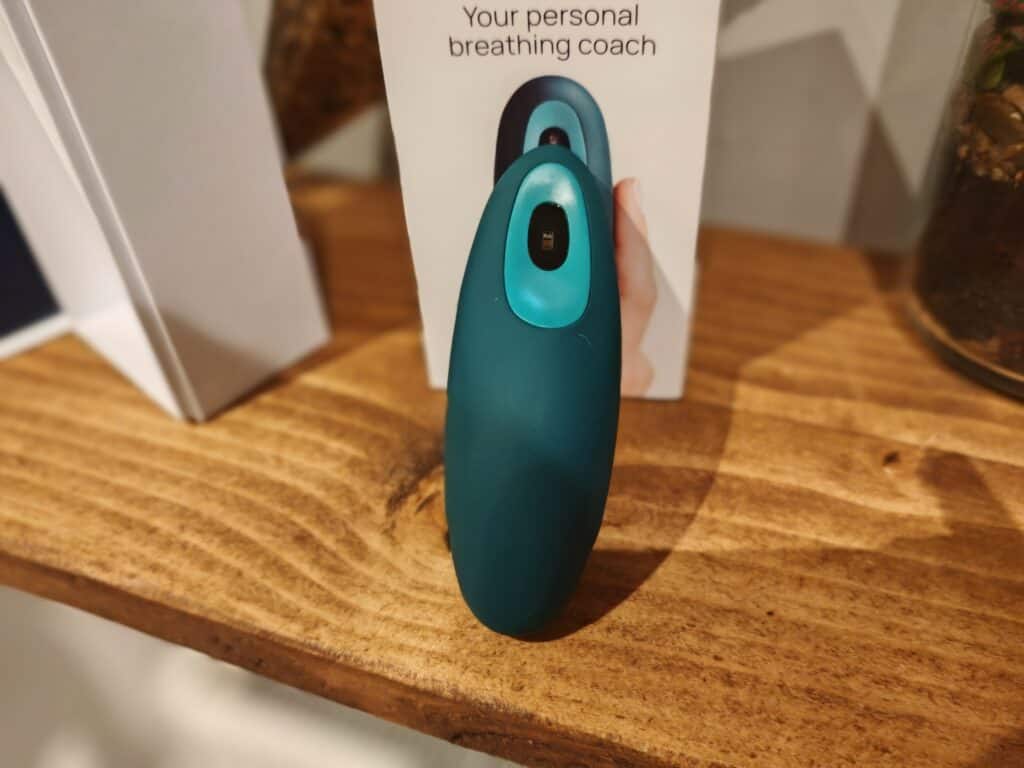
The Moonbird is an ergonomically designed device that sits comfortably in your hand and is coated in soft-touch plastic.
Within the dimple of the Moodbird is an optical heart rate monitor similar to the HRM found on most wearables, such as Garmin and Xiaomi.
Then, the body of the device can expand and contract to replicate the slow rhythm of breathing required for the exercise.
It then uses Bluetooth, allowing you to pair it to your phone and synchronise it with the guided exercise.
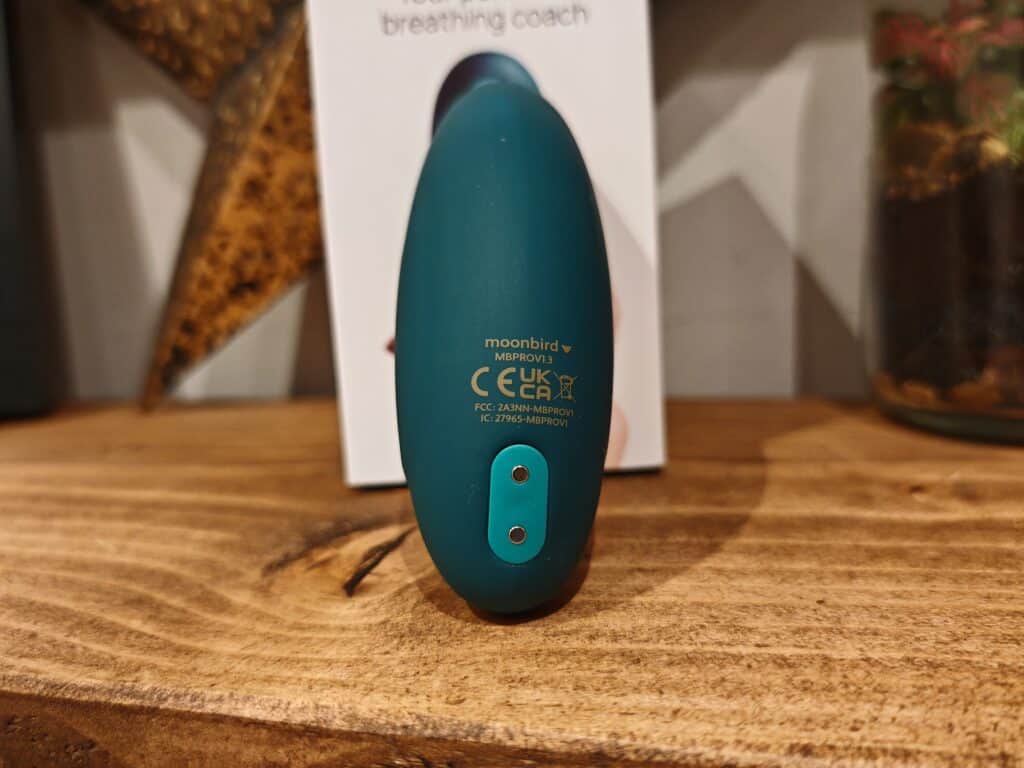
Set-Up
There is not much setup required; you will need the Moonbird App (Android link). You activate the Moonbird when you pick it up, and you need to pair your phone to the device. That’s about it!
Performance: How effective is it for anxiety and sleep?
With the Moonbird connected, you have four predefined exercises consisting of:
- Balanced Breathing Exercise
- Falling Asleep
- Box Breathing
- Curb Anxiety
You can then customise the time of each exercise and optionally mute the audio. Alternatively, you can create your own breathing exercise.
When you start the exercise, you can choose to monitor your HRM, HRV or Heart Coherence.
Heart coherence was something new to me. This is a state of synchronisation between various physiological systems in the body, particularly the heart and brain, resulting in optimal physical, emotional, and mental functioning. It is characterised by a highly ordered, smooth, and sine wave-like heart rhythm pattern, indicating harmony between the sympathetic and parasympathetic branches of the autonomic nervous system.
Basically, your heart rate synchronises with your breathing, speeding up when you inhale and slowing down when you exhale.
Heart Rate Variability has been a popular metric used with Garmin watches over the past few years. This refers to the variation in the time interval between consecutive heartbeats in milliseconds. Contrary to the common perception that a healthy heart beats with a consistent rhythm, a healthy heart actually beats with slight variations in time intervals between beats. These variations are influenced by the autonomic nervous system (ANS), which regulates many unconscious bodily functions, including heart rate.
HRV is a significant indicator of the autonomic nervous system’s balance and flexibility. It reflects the body’s ability to adapt to stress, physical activity, and environmental demands. A higher HRV indicates more variability between heartbeats, signifying better cardiovascular health, resilience, and adaptive capacity of the ANS. Conversely, lower HRV is associated with stress, fatigue, or underlying health issues, suggesting less adaptability and potentially poorer health.
When you begin a breathing exercise with the audio on, a woman with a pleasant, relaxing voice will guide you through the exercise, with the Moonbird slowly pulsating in the rhythm you should breathe.
I like the pulsating rhythm; it is comforting to hold in my hand, and I don’t need to concentrate on what the person is saying. This is particularly useful for someone like me, as I have terrible concentration and am easily distracted. I can use it to relax while watching TV, or when I go to bed, I can use it while attempting to go to sleep without getting annoyed at the vocal coaching.
It is too early to say if it has had a significant impact on my anxiety or sleep, but I would say this is my most successful attempt at committing to breathing exercises and meditation.
My therapist has attempted to get me to do similar timed breathing exercises, but it has never really stuck before. I also demonstrated the Moonbird to her, and she was impressed and felt it would be a good device for people with ADHD.
Price and Alternative Options
The Moonbird Breathing & Meditation Device is available from Amazon for £169.
If you buy from Moonbird directly, they have a 30-day 100% money-back guarantee.
There is the TheaWellbeing Melo, which is a concept similar to guided breathing. This uses light rings and vibration to guide you but lacks the HRM sensor. Reviews on Amazon are not overly positive but it is more affordable at £70.
Mindplace has the Kasina or Limina Light & Sound Meditation System, which requires you to wear glasses to aid in the meditation. These are very expensive, at £360 and £280, respectively.
The Muse 2 is a brain-sensing headband that gives real-time feedback on your meditation. It is an interesting concept, not dissimilar to what Moonbird has done by using a heart rate sensor and EEG to provide feedback. However, it also has a premium price of £240.
The Sensate was another interesting meditation device that uses a mix of infrasonic frequencies and sound which claims to do vagal nerve toning. This appears to be one of the best-reviewed meditation devices. I found that it did help with meditation but at £300 for the Sensate and £49 per year subscription it felt like poor value for money.
I previously reviewed the Modius Slim, which was supposed to be an innovative weight loss device that used vestibular stimulation. I didn’t see any positive results, and they have now pivoted and market the devices as sleep and stress aids, with the headset being worn for 30 minutes each evening prior to going to bed. At the moment, the Modius website seems only to be working for China, but they can ship internationally, and it costs 4,999 Chinese Yuan or £544.
Overall
From my past experience with health tech such as this, I know that the effectiveness of the product is much more subjective than normal consumer technology, and what works well for one person may not work well for another.
I was sceptical of both Sensate and Modius due to some of the questionable scientific claims. I did like the Modius, and it certainly aided meditation, but £300 for a vibrating plastic pebble felt excessive, to say the least.
For Moonbird, they are not using any fancy technologies which claim to aid meditation. It is just a device that provides guided breathing exercises that use heart rate and HRV to monitor progress. Meditation, mindfulness, and breathing exercises are all well-established as effective for anxiety, sleep, and general mental health. So, there is nothing to criticise here.
Personally, I liked the Moonbird. I like the fact I can just hold it in my hand and follow the breathing exercise with no audio on allowing me to try and fall asleep while using it or just relax and watch TV. I found the pulsating nature of the Moodbird quite relaxing too.
I have not used it for a very long time, but I am hoping that this will be the first device that helps me stick to regular breathing/meditation exercises and that would make it good value for money for me.
On the flip side, I can imagine many people won’t get as much value for money from it. It may be more affordable than competing systems, but £170 for a device that pulsates and measures your heart rate seems steep for what it is. The guided exercises are somewhat limited, but at least you don’t have to pay for a subscription. Then. there are plenty of apps available that do guided breathing exercises for free, and I would say that is the best place to start if you want to get into some form of meditation. But, many people, including myself fine committing to using these apps regularly and not getting distracted is frustratingly difficult, and this is where Moonbird may help.
Overall, if you are like me and realise that meditation would be beneficial to you but have struggled to get into a regular habit, I think the Moonbird is well worth considering. You can also try it out for 30 days if you are unsure how effective it may be.
Moonbird Breathing & Meditation Device Review
Summary
If you are like me and realise that meditation would be beneficial to you but have struggled to get into a regular habit, I think the Moonbird is well worth considering. You can also try it out for 30 days if you are unsure how effective it may be.
Overall
80%-
Overall - 80%80%
Pros
- No pseudoscience – breathing exercises and meditation are well-established treatments for anxiety
- The breathing rhythm of the Moonbird allows you to use this without any vocal guidance which I found particularly useful.
Cons
- Quite expensive for what it is
I am James, a UK-based tech enthusiast and the Editor and Owner of Mighty Gadget, which I’ve proudly run since 2007. Passionate about all things technology, my expertise spans from computers and networking to mobile, wearables, and smart home devices.
As a fitness fanatic who loves running and cycling, I also have a keen interest in fitness-related technology, and I take every opportunity to cover this niche on my blog. My diverse interests allow me to bring a unique perspective to tech blogging, merging lifestyle, fitness, and the latest tech trends.
In my academic pursuits, I earned a BSc in Information Systems Design from UCLAN, before advancing my learning with a Master’s Degree in Computing. This advanced study also included Cisco CCNA accreditation, further demonstrating my commitment to understanding and staying ahead of the technology curve.
I’m proud to share that Vuelio has consistently ranked Mighty Gadget as one of the top technology blogs in the UK. With my dedication to technology and drive to share my insights, I aim to continue providing my readers with engaging and informative content.

